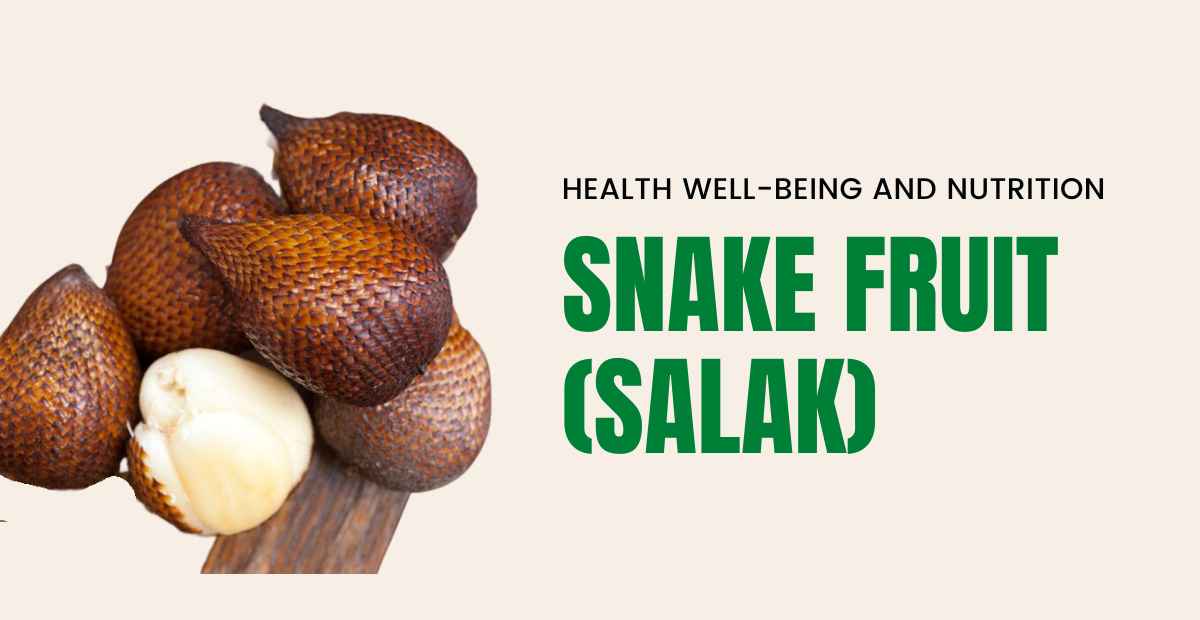Snake fruit, commonly known as salak, is a tropical fruit plant native to Indonesia in the palm family Arecaceae. The fruit has a unique and distinctive flavor that is often described as sweet with a hint of tartness.
The fruit gets its name “snake fruit” from its reddish-brown skin that resembles snake scales when peeled.
Scientific name: Salaca Zalaca.
Salaca Salaca is a tropical palm that thrives in warm, well-drained, sandy or loamy soils. It usually grows to a height of 3–6 m (10–20 ft). It has long, feathery leaves. Salak is mostly propagated from seeds. It takes 3-4 years from seeding to flowering. Good sized succulents will flower after 2-3 years.
The fruits are small, usually 3–5 cm (1–2 in) in diameter, and appear in clusters at the base of the palm stem. Its skin is scaly from red-brown to dark brown. It is usually harvested when the skin is dark brown and fully ripe. The fruits are usually harvested by hand and must be handled carefully to avoid damaging the delicate parts inside.
When you peel the skin, you will see 2-3 white areas inside. The fruit parts look like garlic cloves surrounded by dark brown seeds.
Snake fruits are usually eaten fresh; Sweet flavor with a slight acidic tartness that can be described as a mix of pineapple, citrus and apple. The seeds are usually thrown away.
Varieties: Salaca There are several varieties of Salaca, each with slightly different characteristics in taste and appearance. Some famous varieties are often identified by the origin, taste and color of the fruit. Some examples include S Salaka, Pondo, Salak Bali Gula Pasir, Salak Bali Mera. S. The Wallichiana species grows in Thailand.
Health Benefits of Snake Fruit
Snake fruit has essential vitamins including vitamin C, vitamin A, vitamin E, and various B vitamins, minerals like potassium, iron (32 of the DRI), and calcium - which are important for maintaining strong and healthy bones.
100 grams of fresh fruit contains 77 calories and 0.4 grams of protein. The natural sugars in this fruit can provide a quick burst of energy, making it a great choice for a healthy snack or pre-workout meal.
Phytochemical and nutritional evaluation of ripe snake fruit pulp revealed the presence of various bioactive compounds such as antioxidants such as phenolic compounds and flavonoids. These antioxidants help protect body cells from damage caused by free radicals, which can lead to various diseases and aging.
The high levels of vitamin C in salak can boost your immunity by supporting the production of white blood cells and increasing your body's ability to fight infection.
The potassium it contains helps regulate blood pressure by counteracting the effects of sodium, potentially reducing the risk of high blood pressure and heart disease.
Snake fruit contains dietary fiber, which aids digestion, promotes regular bowel movements, and prevents constipation.
Snake fruit is used in traditional medicine for its anti-inflammatory properties, which can help reduce symptoms of inflammatory conditions.
The fiber content of salak may help you feel fuller for longer, which can help control weight by reducing total calorie intake.The season of snake fruit may vary slightly depending on the region. Fresh fruit is available from May to September.
Look for snake fruits with dark reddish-brown to reddish-black skin. The skin should be firm and free of blemishes or fungus. Choose fruits that are uniform in size and shape, which can be an indicator of quality.
Avoid fruits with green or yellow spots as they are not fully ripe. Also, stay away from very soft or mushy fruit, as they may be overripe, and fruit with damaged or flaky fruit, which may be a sign of poor quality.
Storage
Snake fruit can be stored at room temperature for a few days if you want to eat it relatively quickly. However, they taste best fresh, so try to eat them within a day or two.
Store them in the refrigerator. A plastic they are perforated to allow air circulation to prevent mold growth.

